
AGES Responding to Today’s Cross-Generational Private Club Memberships CHAMBERS ISSUE N O 13 • SUMMER 2016 CLUB ROAD A Chambers Publication Five Easy Reads for GMs p.2 Repair or Replace p.8 Green by Association p.10 Perception is Everything Part II: Implementing Club Brand p.11 PLUS p.12 Behind the Curtain with Lee Hyden, AIA Director of Architecture p.4
SPANNING THE
Friends —
As the world becomes more complex, so do private clubs. Club memberships are becoming more diverse, and it seems like there are always new desires to fulfill and new challenges that need to be addressed. Change can be overwhelming, but it can also be a fantastic opportunity to improve and reinvent.
In this issue, we discuss cross-generational design and programs that enhance the club experience for members – and secure the club’s future.
Taking all generations into consideration when you plan club improvements will place you ahead of your competition. Ultimately, proactivity is the road to prosperity – for the club and, most importantly, its membership.
What does your club do to cater to the ever-shifting demographics of today’s membership? We’d love to hear from you!
Here are the easiest and most valuable reads out there for club managers looking to improve their performance as leaders and industry experts. Check them out. You won’t be sorry!

If you only have a few minutes to spare…
The best quick n’ easy resource in the industry, The PRIVATE CLUB ADVISOR (PCA) is a short monthly newsletter assembled by hospitality veteran Jackie Carpenter, CCM. PCA is brimming with condensed private club news, bite-sized advice from industry experts, and timely mini-articles on seasonal issues. It may come in a small package, but this resource gives you the most bang-foryour-buck in terms of length and cost!
 Rick Snellinger Bob Hickman
President & CEO Chairman of the Board
Rick Snellinger Bob Hickman
President & CEO Chairman of the Board
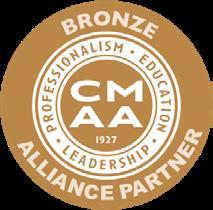
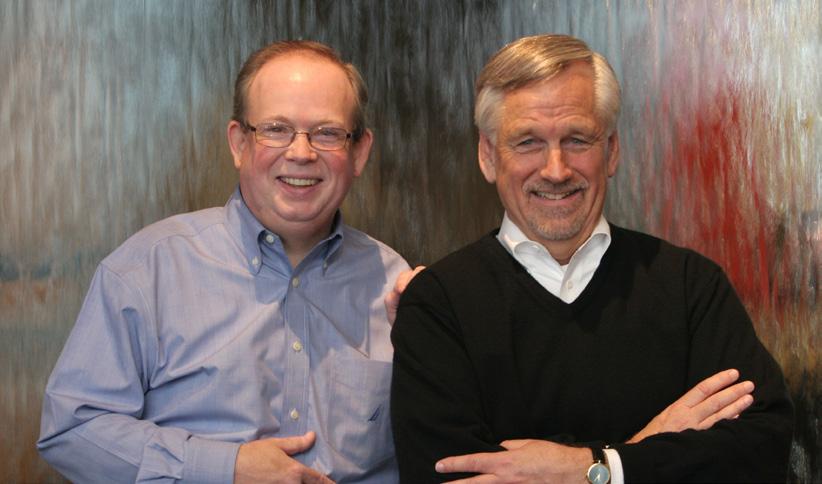
EMAIL RICK EMAIL BOB


It’s no secret that the NATIONAL CLUB ASSOCIATION offers invaluable resources to club managers, but one of their most helpful offerings is the NCA Club Industry Brief, a bi-monthly roundup of private club news. Divided into categories ranging from industry-relevant legislation to hospitality trends, this collection of news stories from various sources offers a well-rounded peek into current industry events.

/ CLUBROAD ISSUE 13 / SUMMER 2016 FEATURED
A NOTE FROM CHAMBERS CLUB ROUNDUP
CHAMBERS IS PROUD TO BE A CMAA CAP SPONSOR.
CHAMBERSUSA .COM 2 ] CONNECT: BALTIMORE / DALLAS / MINNEAPOLIS
RAVING FANS

It’s no longer enough to have a happy membership. You need a delighted, over-the-moon, crazyabout-your-club membership that will urge their friends to join in the fun. Raving Fans, authored by management expert Dr. Ken Blanchard, will help you accomplish just that. Told in a series of parables, this book manages to be both entertaining and instructive, all while underlining the importance of pushing beyond customer satisfaction into the realm of loyal fandom.

BE OUR GUEST
Running a top notch club is all about exceeding membership expectations – and no one knows how to exceed expectations better than the Walt Disney Company. Be Our Guest may not be hot off the presses, but it has stood the test of time as a hospitality industry essential. Known as the world’s leading expert in customer satisfaction, Disney shares some of their best techniques for providing first class service. Put their techniques to the test!
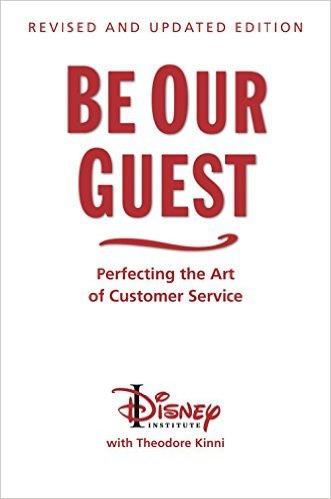
THE ONE THING
Part motivational book and part management guide, The ONE Thing challenges convention by encouraging a minimalistic approach to business (and life in general). Authored by the co-founder of Keller Williams Realty, Gary Keller shares his wisdom on keeping life simple and streamlining your management style until you’re focused on one important thing – and doing that one thing well.


FEATURED
CLUB ROAD Issue No 13 / Summer 2016 CLUB ROAD is a Chambers publication. Managing Editor / Creative Director: Lauren Gordon Copywriter: Jackie White clubroad@chambersusa.com 410.727.4535 2 Five Easy Reads for General Managers 4 Spanning the Ages A Cross-Generational Approach 8 Down to Business Repair or Replace 10 trending Green by Association 11 Perception is Everything Part II: Implementing Brand 12 Bridging the Gap with Lee Hyden, AIA BALTIMORE / DALLAS / MINNEAPOLIS PLANNING • ARCHITECTURE INTERIOR DESIGN • PURCHASING CHAMBERSUSA .COM CLUB ROAD
There are millions of books out there claiming to provide value, but private club managers are busy people — and there’s simply no way to sink your teeth into everything... Instead, it’s about reading the right things – and we’re here to help!
GET IN TOUCH! CLUBROAD@CHAMBERSUSA.COM / 410.727.4535
If you can dedicate a few hours…
SPANNING THE AGES
Responding to Today’s Cross-Generational Private Club Memberships
Unlike the private clubs of the past, today’s memberships are diverse in every way— particularly when it comes to age. In response, the focus of club facilities and programming has begun to shift: How can we cater to everyone without over-generalizing? How can we provide the feeling of home for seasoned members, while still satisfying the needs of single professionals and families? What are the best ways to bring multiple generations with entirely different attitudes and desires together?

CHAMBERSUSA .COM 4 ] / CLUBROAD ISSUE 13 / SUMMER 2016
Clubs across the country are recognizing the need to satisfy cross-generational memberships. One club that has done this remarkably well is St. Clair Country Club. “Demands on people’s time—not just for the 30 to 40-year-olds, but for everyone— are incredible. They’re all different, but they’re growing regardless. When there’s an opportunity to spend quality time together doing things that they actually enjoy—that’s valuable,” says Steve Gonzalez, General Manager of St. Clair Country Club.
St. Clair is a largely community-based club, with most members living within a 5-mile radius. Offering first class amenities and excellent programming, the club has built a
robust membership with a waiting list. Though St. Clair is a century old – celebrating its centennial this year –they’re certainly not stuck in the past. In fact, the Club is constantly looking ahead and considering industry trends – particularly when it comes to cross-generational memberships. “We take a holistic approach by focusing on engaging families that are three or sometimes even four generations deep,” says Gonzalez.
Of course, it’s easy to describe almost any club as “cross-generational.” But— What does it actually take to satisfy an age-diverse membership?
WE ’ RE GLAD YOU ASKED...
— Steve Gonzalez, General Manager of St. Clair Country Club, PA
We talked with Gonzalez about embracing multiple generations in order to bring different perspectives into the workplace, offer members multiple dining facilities that suit their varying needs, and provide inclusive programs and amenities that engage members across the age spectrum. The final results? An enhanced member experience, increased membership value, and greater utilization—because everyone wants to be there!
CLUBROAD@CHAMBERSUSA.COM [ 5 FEATUREDFEATURED
DEMANDS ON PEOPLE ’ S TIME ARE incredible ... WHEN THERE ’ S AN OPPORTUNITY TO SPEND QUALITY
TIME TOGETHER DOING THINGS THEY actually enjoy –THAT ’ S VALUABLE.
Turn the page and keep reading! Or head straight to OUR BLOG >>
BRINGING IN DIFFERENT PERSPECTIVES
For the first time in America’s history, four generations are collaborating in the workplace. This has affected a wide variety of industries and private clubs are no exception.
Much of the literature currently available about the multigenerational workplace only addresses the challenges involved, misleading managers to believe that age-diverse teams are simply headaches waiting to happen. But when correctly guided, a multigenerational workplace actually presents far more opportunities for success than failure.
Numerous studies have shown that a diverse workplace brings in different approaches to problem-solving and perspectives on club issues.

CREATING INCLUSIONARY PROGRAMS & AMENITIES

Cultivating active youth recreation programs is one of the best ways to involve the entire family in private club activities. It may seem counterintuitive to strive for inclusion by focusing on one generation, but children often bring families together – St. Clair being no exception. “Many of our family activities are actually built out of junior programs,” says Gonzalez.

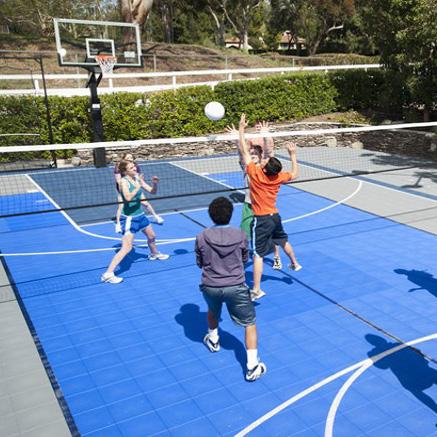
Junior Golf Programs are a smart investment for many clubs because they not only engage younger members, but also introduce them to golf – and possibly groom future legacy members. “We really invested time and energy into our Junior Golf Program and offer clinics for all ages,” says Gonzalez.
Click

/ CLUBROAD 13 CHAMBERSUSA .COM 6 ]
FEATURED
here to read more!
here to read more!
Click
OFFERING MULTIPLE DINING FACILITIES
The industry consensus is that formal dining no longer rules the roost. With families struggling to spend quality time together, members are placing higher value on relaxed spaces that cater to all ages. With this trend in mind, St. Clair Country Club embarked on a strategic facilities planning journey to improve their dining facilities and create a more welcoming environment for their crossgenerational membership.
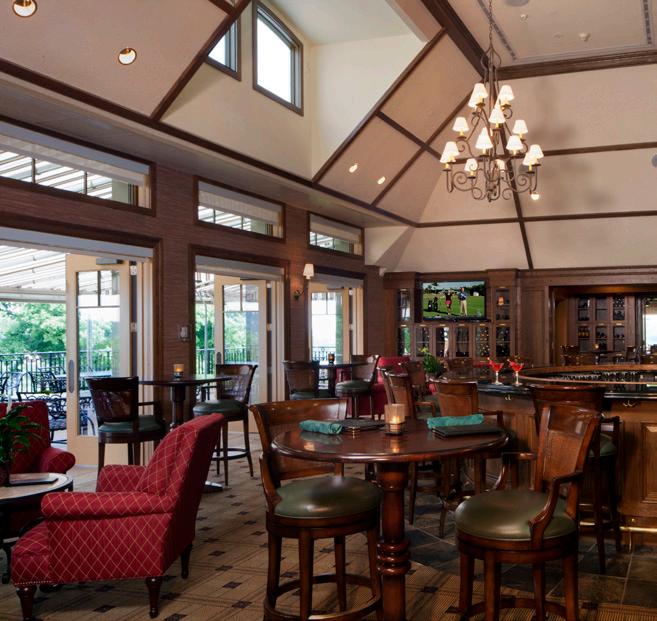
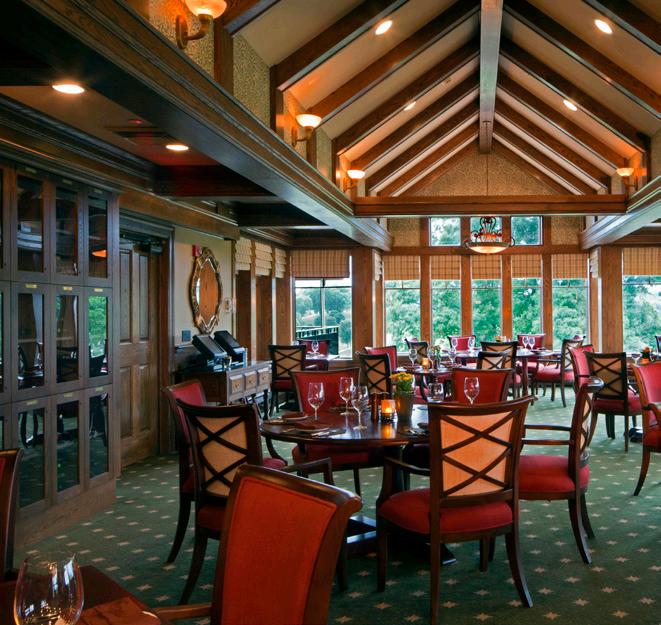
“We worked with Chambers to rebalance club dining. Before, we were heavy in formal dining and didn’t have any spontaneous gathering

spaces for members to congregate. We decided to dedicate significantly more space to more casual dining,” says Gonzalez, “We wanted to remain mindful of the past, but focused on the future.”
To execute this strategy while still appealing to all members, casual dining was divided into two primary spaces: the family dining and adult contemporary dining areas.
Click here to read more!
SHOW US THE VALUE
Adapting your club to today’s cross-generational environment may seem like a good idea in theory, but it’s always essential to ask the most important question of all: What actual value will these changes yield?
Gonzalez recognizes there’s no price point on a singular and enduring member experience. “Providing happiness for the entire family and life experiences that they’ll remember is priceless,” he says. Cross-generational clubs offer opportunities for each and every family member to enjoy the club experience – whether they’re participating in activities separately or together.
Click here to read more!
CLUBROAD@CHAMBERSUSA.COM [ 7
St. Clair Country Club, PA
Repair or Replace
Taking a Proactive Approach to Maintaining Club Facilities
Despite the economy’s growing strength, clubs are still feeling the burn from the Great Recession. During the economic downturn, many private clubs retired their full-time maintenance staff in favor of yearly consultants and “band aid” maintenance solutions. This left many general managers with ill-maintained clubs that were held together by shoestring budgets and duct tape. Now that prospects are brighter, it’s become more important than ever to repair neglected areas – and proactively approach facility maintenance in the future.

CHAMBERSUSA .COM 8 ] / CLUBROAD ISSUE 13 / SUMMER 2016 DOWN TO BUSINESS
State of the economy aside, there’s an endless number of reasons to stay on top of club maintenance: diminished member experience, potential long-term costs, safety issues, liability concerns... you get the idea. But taking a smart approach to club maintenance is easier said than done.
What are some common problem areas for clubs?
HVAC System One of the most common areas requiring regular maintenance is the club’s HVAC system. Though most units will run strong for 15-20 years, they need regular maintenance to operate at optimum levels and live to their full potential.
Click here to read more!
Cracking Sealants Another common problem that’s easy to overlook, but can cause substantial damage if neglected. This is particularly important for clubhouses located in damper climates. “When sealants and cracks are not regularly checked, it’s possible for moisture to seep in and damage the structural integrity of the building. It can be incredibly costly for the club if they’re not proactive about repairing it,” says Chambers’ Vice President Rick Christensen, AIA.
Click here to read more!
Aesthetics From an aesthetic perspective, it’s also important to keep the club exterior looking neat and well-maintained. Repairing chipped paint and cracked parking lots may not be essential to member safety, but it does help preserve the club’s “curb appeal” and first impression...
Click here to read more!
Want to discuss how best to maintain your facilities?
Click here to email us!
How can clubs combat club facility wear and tear?
No building can be “like new” forever, but there are certain steps that club leaders can take to preserve building function and reduce maintenance costs. “Planning and consistently keeping track of your maintenance efforts through a spreadsheet or some other means will keep buildings nicer for longer,” advised Christensen.
But where do you begin in creating an effective plan that will minimize your maintenance costs?
Reading the architect’s Closeout Manual at the end of any construction or renovation project is a great place to start. “The Closeout Manual will spell out exactly what needs to be maintained and when,” says Christensen. This document provides a comprehensive outline of good maintenance practices for each component of the building, handing you the tools to devise an effective plan for future maintenance efforts...
Visit
CLUBROAD@CHAMBERSUSA.COM [ 9
“Planning and consistently keeping track of your maintenance efforts... will keep buildings nicer for longer”
— Rick Christensen, AIA Vice President of Chambers, MN
our blog to read the full story!
GREEN by Association
How Environmental Management Programs Help Clubs Stay Ahead of Sustainability Trends


As sustainability becomes a priority for emerging generations, private clubs must begin contemplating their role in maintaining the club itself and its surrounding properties. Despite the growing public concern about the environment, 65% of general managers said that their club could make more efforts toward sustainability according to Chambers’ “Club of the Future” survey. Though there are many ways that clubs can go green, conservation programs like Audubon International help clubs not only execute sustainability efforts, but also display these efforts to current and potential members.
Donadio, Audubon International’s Director of Cooperative Sanctuary Programs. Audubon International, a 25-year-old nonprofit that champions environmental conservation in public spaces, offers a program that focuses exclusively on golf courses. “Our largest program – the Audubon Sanctuary Program for Golf – works with public, private, and resort courses to help educate them on how to reduce their environmental impact,” says Donadio.
According to Donadio, it typically takes courses about 1-3 years to be recognized as certified sanctuaries. After consulting with Audubon International to discover what the club is doing well and where they need to improve, clubs must work on five key factors before becoming certified: (1) Water Conservation, (2) Water Quality, (3) Wildlife and Habitat Management, (4) Chemical Use Reduction and Safety, and (5) Outreach and Education.
Once a club’s course achieves status as a certified sanctuary, then what? There are definite benefits of creating strong relationships with environmental organizations like Audobon International. Visit our blog to find out!
CHAMBERSUSA .COM 10 ] / CLUBROAD ISSUE 13 / SUMMER 2016
FEATUREDTRENDING
65% of general managers say their club could make more efforts toward sustainability.
— Chambers’ Club of the Future Survey
here to read more!
“Getting certified can help courses understand what they are lacking and they’re doing well in terms of sustainability,” explains Tara
Click
PERCEPTION IS EVERYTHING: PART II
The Road to Implementing Club
FORGING A MEMORABLE CLUB EXPERIENCE
Think about how many of today’s top performing companies have built their empires on stand out branding: Apple, Nike, Coca-Cola…just to name a few. Private clubs are a world away from corporations, but they both have one essential thing in common: They rely on distinctive branding for true success. In part one of our branding series, we discussed how to identify how your members and the community view your club through focus groups, surveys, consulting past club leaders, and more.
Why is this vital for private clubs?

Because in this industry, perception is brand.
Distilling perceptions into a marketable image is challenging, which is precisely the reason why many private clubs struggle with even the
most essential marketing efforts. But now that you’ve put your finger on what makes your club shine, you can put those qualities front and center in everything you do.
“Brand creates a continuous experience for the membership – from print materials, to the website, to the interiors,” says Charlie Turner, Chambers’ Director of Interior Design.
Implementing a consistent brand engages current members and reminds them why they chose your club – and why they should encourage their friends to join too. Though there are many ways to project club brand, here are a few of the most effective methods.

Click to read more
Top 5 Methods
CLICK ON EACH TAB TO VISIT OUR BLOG & FIND OUT MORE!
BLOG >>
CLUBROAD@CHAMBERSUSA.COM [ 11 CLUB EXPERIENCE
A
THROUGH Technology
A CLUB Marketing Professional
CAREFULLY CRAFTED Menus CREATE
Style Guide ENGAGE
HIRE
THOUGHTFUL Club Interiors
LEE HYDEN, AIA Director of Architecture
GET IN TOUCH WITH LEE! lhyden@chambersusa.com

CR: HOW DID YOU FIND A PASSION FOR ARCHITECTURE AND INTERIOR DESIGN?

LEE: In a sense, it’s part of my DNA. Even as a child I designed houses for my family. Actually, it was my love of art that led me to study interior design in college. I think of design and architecture as a holistic art. I’ve always practiced interior design with an architectural perspective – as a complete experience. READ MORE >>
BRIDGING THE GAP
lee hyden talks design continuity

Chambers recently brought on Lee Hyden, AIA, as the Director of Architecture at our Baltimore Office. With a valuable professional background in both architecture and interior design, Hyden brings an unrivaled passion for comprehensive design to the table. Of course, this attitude couldn’t fit in better with Chambers’ 360 degree approach to private club design! Here she shares more about her past experiences in the field, her bright future at Chambers, and her appreciation for cohesion and collaboration.

CR: WHY DO YOU THINK BRIDGING THE GAP BETWEEN THE TWO IS SO IMPORTANT?
LEE: To solve design problems and produce the best designs possible, the experience of the space must be cohesive. You don’t want the outside to look one way, then enter the building and have it feel completely different. Instead, you want to create a seamless, intentional experience of the space. READ MORE >>
CR: WHAT DO YOU MOST LOOK FORWARD TO ABOUT WORKING AT CHAMBERS?
LEE: I look forward to developing client relationships and working with different unique clubs to solve their individual problems. I also look forward to seeing how the latest trends – like family-focused facilities and smart technology – will help us rethink how we see and use private clubs. It’ll be interesting to integrate these trends into our designs so multiple generations can experience clubs on their own terms. READ MORE >>
ISSUE 13 / SUMMER 2016 BEHIND THE CURTAIN
CONNECT: BALTIMORE / DALLAS / MINNEAPOLIS
click here to read the full interview


 Rick Snellinger Bob Hickman
President & CEO Chairman of the Board
Rick Snellinger Bob Hickman
President & CEO Chairman of the Board



























